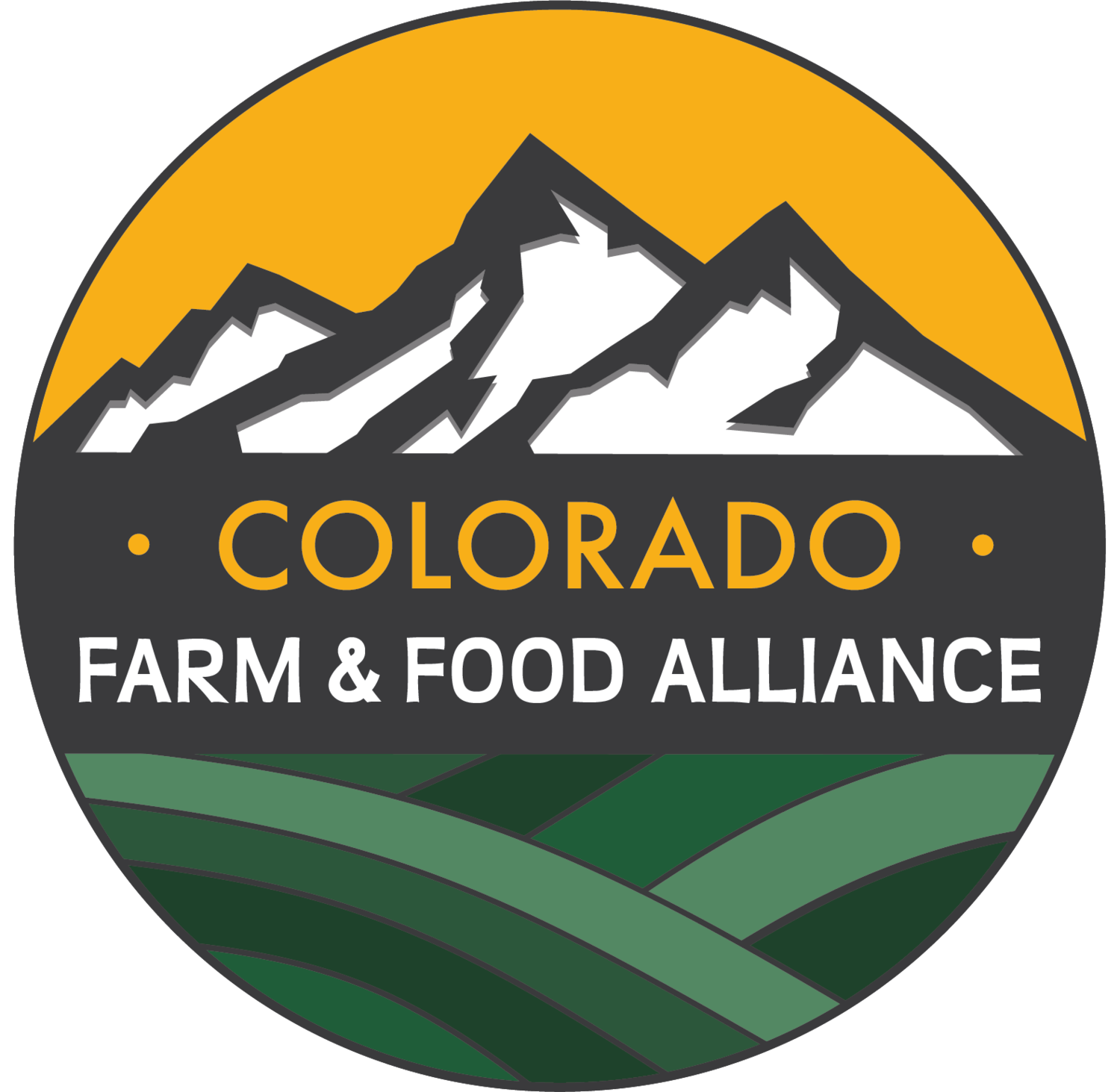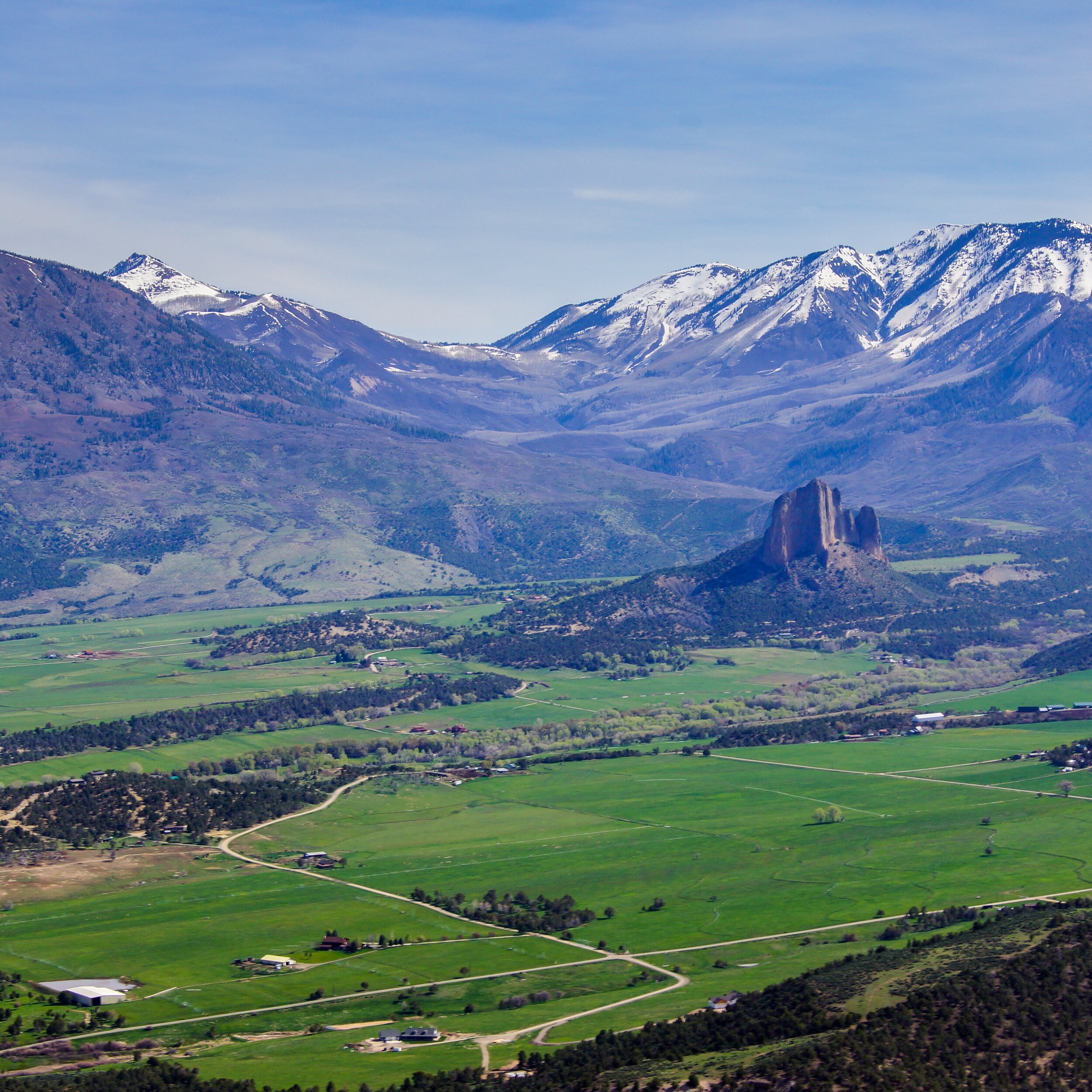Healthy Lands and Clean Water Protect Colorado’s Farms, Food and Drink
In 2014 a group of community leaders in the North Fork Valley had just submitted a detailed comment to the U.S. Bureau of Land Management (BLM), a federal agency preparing a public lands management plan for the area. The booklet-sized comment was presented as its own sub-alternative and the leaders’ group asked the BLM to consider it among their other alternatives in the draft plan that it was preparing.
North Fork Valley of the Gunnison River
“Colorado’s Farm to Table Capital”
That community-initiated comment, dubbed the North Fork Alternative Plan included enough detailed and substantive information that the agency did include it (as Alternative B1) in the draft plan. And although that option was not selected, the final plan was litigated and the BLM was sent back to the drawing board and is expected to initiate a new draft plan amendment for public consideration and comment this winter. (More on that below.)
Roots of the Colorado Farm & Food Alliance
It was from this group of community leaders that the Colorado Farm & Food Alliance first sprouted. The exceptional leadership displayed was “proof of concept” that a community-based rural leadership, education, and advocacy group could be a potent tool in securing a sustainable future. Food, and the farms it comes from, touches everything so we quickly learned that it is also a powerful convening and organizing force as well.
In 2015, when the Colorado Farm & Food Alliance became its own Colorado-incorporated entity, our first tag-line was “Healthy Lands and Clean Water Protect Colorado’s Farms, Food and Drink.” Overtime, since food truly does touch everything, our mission grew to include not only conservation goals, but climate action, food fairness, and small farm support.
But at our roots is the on-going effort to secure protections for western Colorado’s lands and watersheds, which undergird our entire food system. And in 2024 we will be stepping back into a more active role on public lands conservation and watershed protection.
Public Lands & Watershed Protection - 2024
Here are three big ways that the Colorado Farm & Food Alliance will be doing that work in 2024
1 - Public Lands + Local Farms as Rural Economic Force
One way we’ll be leaning into public lands and watershed conservation is by showcasing how public lands and local food systems can work together and support each-other. Here in the North Fork region we have some great examples already - Gunnison Gorge National Conservation Area, Curecanti National Recreation Area, and the Black Canyon National Park.
As we reimagine how rural communities can sustain farms, workers, local businesses and healthy lands and watersheds, how we manage and care for our public lands will be an important piece of the solution. These protected landscapes are critical elements to the growing economic force that also includes our local farms, markets, wineries and other agricultural businesses and attractions.
The Colorado Farm & Food Alliance thinks that model can work for other places in our region too - such as the “West End” of Montrose County and the red rock canyonlands of the Dolores River watershed. Already there is a National Conservation Area (NCA) bill in Congress to protect some public lands in the southern part of the rivershed, and talk is growing about creating a new National Monument in its northern reaches.
So in 2024 we’ll be sharing what we have learned more broadly in the region, and elevating examples of farm and food leaders who recognize the value of securing protections for western Colorado’s lands and watersheds.
2 - North Fork Alternative Plan Redux
What is old is new again, and that includes the North Fork Alternative Plan. More specifically the BLM will be issuing a plan amendment for public lands in the Uncompahgre Field Office to address deficiencies in the final plan that came out under the last federal administration.
That 2020 plan, which would have opened most of the area to expanded oil and gas leasing and development, was successfully challenged in court by North Fork plaintiff groups including the Western Slope Conservation Center and Citizens for a Healthy Community. So now the BLM, an agency within the U.S. Department of Interior - parent to our nation’s parks, wildlife refuges, as well as BLM lands - is revisiting that plan.
We expect to see an announcement from the BLM this winter as that new plan is initiated, with several opportunities extending into the New Year for public review and comment. The Colorado Farm & Food Alliance will be closely engaged with this planning process, and working with our partners to develop a strong response. And we will definitely be sharing more about this and how you can help in the ongoing effort to secure the proper management for these incredible and valuable public lands.
Our farms and our food system rely on the healthy functioning of the ecological systems and processes these lands support, which also boosts our resilience in a period of climate change and disruption. The value of these public lands as intact ecosystems already outweighs their value as a source for carbon-burdened fossil fuels.
3 - Healthy Watersheds and Secure Water Supplies
Which gets us to the third way we will be showing up for public lands in 2024. These lands serve a vital purpose in safeguarding western Colorado water. Healthy lands make healthy watersheds. Neither our farms nor life at all would be possible here without the security of that supply. The Colorado Farm & Food Alliance will always speak out for protecting watershed lands, act as a convener of projects that restore their health, and advocate for policy that protects western Colorado water for rivers and farms, for secure habitat, and for prosperous communities.
PROTECT THOMPSON DIVIDE One important opportunity to speak up for Western Slope watersheds ends January 8, 2024. We have long supported protections for the Thompson DIvide area, which includes headwaters to both the North Fork and the Crystal rivers. Now the federal government is preparing to enact a mineral withdrawal for the area that would prevent additional oil and gas and coal-mining in the area, an outcome decades in the making. While this decision is for twenty years and only administrative, not the Congressional protection that could provide permanence, this is still a moment that many in western Colorado have worked toward for years.
Your comment now in support can help with this final push to get it across the finish line. Please visit the Thompson Divide Coalition for all the details and to add your voice to this historic effort, now so close to a real public lands win. You can also put in a good word for efforts in COngress to secure permanent protection for these and other lands in the Colorado Outdoor Recreation and Economy (CORE) Act, which just passed out of committee in the U.S. Senate, along with the Dolores NCA legislation.
BIG GAME HABITAT PROTECTION A second important opportunity is a state-wide planning amendment to protect wildlife habitat and migration routes on public lands. That comment period is open until February 6, 2024.
The proposed amendment primarily addresses new oil and gas drilling projects or changes to existing drilling on BLM lands, and how these projects would impact wildlife habitat.
“We’re really trying to line up our land use plans to be consistent with other federal and state agencies, local governments and tribes, and really try to conserve habitat for big game species,” said Brittany Sprout, public affairs specialist for BLM.
A recent column by western Colorado backcountry big game hunting guide Adam Gall summed up the importance of the habitat rule and these public comment opportunities to impact BLM land-use planning, well:
The 90-day comment period the BLM’s draft plan is currently in presents a golden opportunity for hunters, conservationists, and concerned residents to voice their opinions, to thank the BLM for strengthening protections for wildlife, and to urge them to consider improving their plan. Together we can ensure the final plan reflects our values and provides future generations with the same opportunities we have been so blessed to experience.
So, when you notice the Colorado Farm & Food Alliance speak up on a land use plan, or urge that you do the same, it is not only the natural extension of the work we do here every day: To educate about the importance of our agricultural land and legacy and to provide a platform for rural leadership on climate and conservation (among other things).
Securing protections for Colorado’s critical lands and water is at the very root of what we do, because Healthy Lands and Clean Water Protect Colorado's Farms, Food and Drink.




